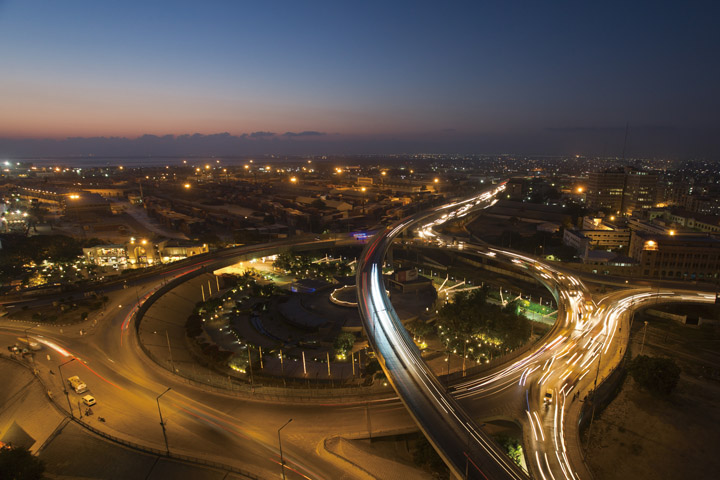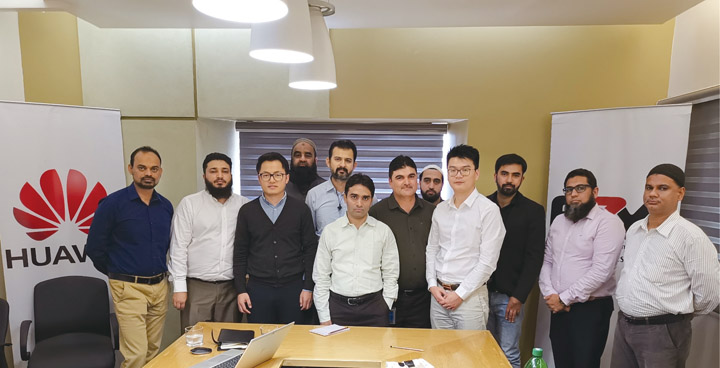EZY Pakistan: Breaking Barriers and Building Supply Expressways
This site uses cookies. By continuing to browse the site you are agreeing to our use of cookies. Read our privacy policy>
![]()
Enterprise products, solutions & services

Headquartered in Singapore, EZY operates in 15 Asian countries, including the Philippines, Vietnam, Indonesia, India, and Pakistan. In 2015, EZY became a Huawei distributor in Pakistan. It focused on selling mainstream Internet Protocol (IP) and Information Technology (IT) products, covering industries such as finance, education, and electric power. In just a few years, the Compound Annual Growth Rate (CAGR) reached 50 percent, and EZY became a top distributor in Pakistan’s ICT industry.
During the rapid development of Huawei’s enterprise business in Pakistan, Huawei encountered many difficulties in supply collaboration with EZY. When Huawei’s supply chain team visited EZY’s partners, EZY’s business director pointed out that Huawei’s supply period was abnormally long, and the logistics efficiency was low. The challenge was to find a way to achieve efficient production and sales collaboration, break down the two major ‘barriers’ — the long supply period and the inefficiency of the collaboration — and build a more efficient supply lane.
In 2018, Pakistan’s foreign exchange policy tightened (the foreign exchange reserve was set at less than US$10 billion), the rupee seriously depreciated, the trade profit levels of Small- and Medium-sized Enterprises (SMEs) decreased, and the other foreign exchange performance indicators declined. The nation’s End-to-End (E2E) supply period was 24 days, ranking last in the Middle East. EZY failed to obtain rebates on Management By Objective (MBO) supply incentives. Meanwhile, the demand for improving efficiency and reducing costs was increasing for channel partners at all levels.
Huawei Supply Chain and EZY organized a channel supply meeting with Tier-2 agents in the Karachi region. By listening to all of the parties’ requirements and suggestions and reviewing internal cases after the meeting, Huawei and EZY identified six major obstacles to building a fast supply track.
Huawei Supply Chain outlined the supply business process, pain points, and requirements to EZY. After learning about the partner’s business plans and annual requirements for important products, Huawei Supply Chain took on various challenges and analyzed the feasibility of multiple measures based on real-world scenarios. The supply chain set three targets: shorten the E2E supply cycle, improve logistics quality and reduce the number of freight forwarders, and switch the supply center to Dubai.
Our strategy of steady growth requires us not to think opportunistically to seek quick results and instant benefits. Instead, Huawei Supply Chain, together with customers and partners, must work together to build a solid foundation and make continuous improvement based on optimization solutions.
For example, Huawei Supply Chain proactively applied for TACs from Pakistan Telecom Authority (PTA) in advance and authorized agents at all levels. This solved the problems that were caused by being unable to share TACs among channels, and reduced the application time by 15 days on average.
Through a series of optimization measures for in-depth collaboration between the two parties, the E2E supply period was shortened to 13.1 days in 2019 — 11 days shorter than that of 2018. EZY obtained MBO supply incentives for the first time, ranking first among all distributors in the Middle East. Channel partners at all levels also appreciated Huawei’s proactive application for TAC authorization for agents at all levels. This was exemplified in a third-party customer satisfaction survey in which Huawei Supply Chain scored 81.7 points — 8.7 points more than any of its competitors.

Huawei Supply Chain and seven Tier-2 resellers gathered at EZY headquarters in Karachi for a workshop
Huawei Supply Chain and EZY will conduct wider supply collaboration and streamline the supply model from the Dubai supply center to local supply centers. This will further shorten Huawei’s product supply cycle for end customers (25 days for sea transportation and 10 days for air transportation). Huawei’s supply will be upgraded from fast lanes to expressways, which will support EZY’s business expansion, as well as other channel partners, and achieve benefits for Huawei, channel partners, and customers at all levels.
【Customer Testimonials】
“It has been a tremendous journey with the global leader in ICT solutions — Huawei — from 2014 to now, and it will continue to be one. Gaining the Pakistan market for Huawei wouldn’t have been possible for EZY without Huawei’s support. I’d like to thank Huawei’s team for their support toward improving supply chain issues between EZY and Huawei. Huawei is our core product, being a VAD, and we value Huawei’s strategy and work accordingly. BP also play a vital role, so we will continue conducting BP sessions in this regard in order to recognize Huawei as a brand, and will not only assure to continue the same experience but will definitely try to improve further.”
— Saeed Sheikh, CEO / MD Pakistan & MEA, EZY TECHNOLOGIES PVT LTD.
